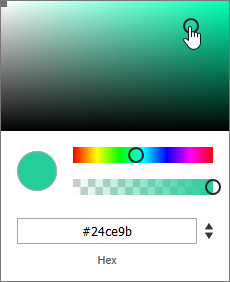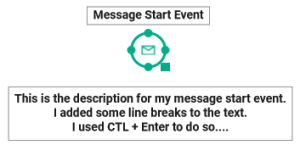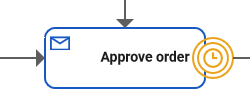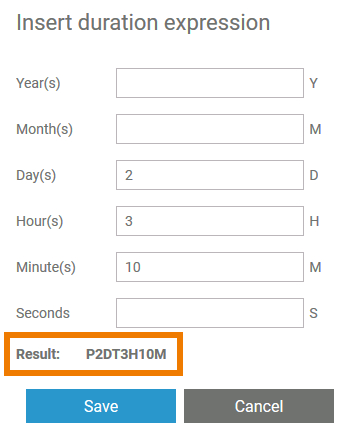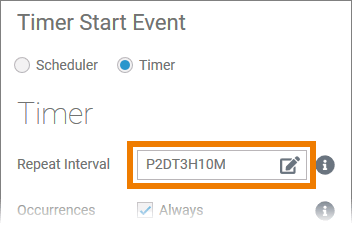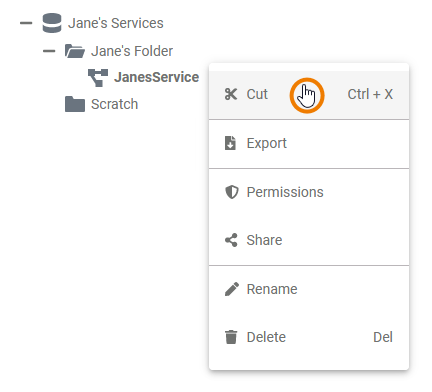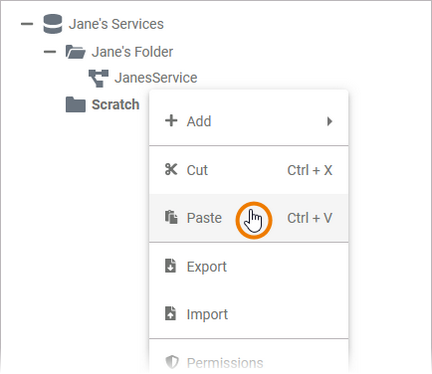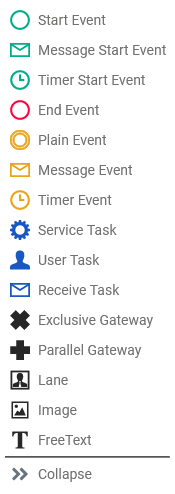| Chapter | Name | Excerpt | |||||||||||||||||||||||||||||||||||||||||||||||||||||||||
|---|---|---|---|---|---|---|---|---|---|---|---|---|---|---|---|---|---|---|---|---|---|---|---|---|---|---|---|---|---|---|---|---|---|---|---|---|---|---|---|---|---|---|---|---|---|---|---|---|---|---|---|---|---|---|---|---|---|---|---|
| BPMN Elements | attributes | All available attributes of an element are displayed in the Attributes Panel. | |||||||||||||||||||||||||||||||||||||||||||||||||||||||||
| BPMN Elements | attributes_display_name_of_attribute | Display Name of Attribute Activate the checkbox if you also want to display the names of the attributes on the diagram pane. | |||||||||||||||||||||||||||||||||||||||||||||||||||||||||
| BPMN Elements | attributes_font | Font Use this section to select the font for display of the element's attributes on the diagram pane. You have also several formatting options. | |||||||||||||||||||||||||||||||||||||||||||||||||||||||||
| BPMN Elements | attributes_font_color | Font Color You can also adapt the font color of the element's attributes on the diagram pane. Click on the color placeholder, then use the color picker to select a new color or enter the hexadecimal code of the desired color: | |||||||||||||||||||||||||||||||||||||||||||||||||||||||||
| BPMN Elements | attributes_font_size | Font Size In this section you can change the font size of the element's attributes on the diagram pane. | |||||||||||||||||||||||||||||||||||||||||||||||||||||||||
| BPMN Elements | attributes_word_wrap | Word Wrap By default, the element's attributes are displayed in a single line on the diagram pane. When the word wrap option is disabled, a placeholder (...) indicates that more text is available but hidden: In the attribute Description you can also enter line breaks using CTL + Enter. To show the text including your line breaks, activate the word wrap option: A placeholder (...) indicates that more text is available but hidden. If you want to display the whole text, resize the attribute on the diagram pane. | |||||||||||||||||||||||||||||||||||||||||||||||||||||||||
| BPMN Elements | boundary_events | Intermediate Event, Message Intermediate Event and Timer Intermediate Event can be used as boundary events along with User Task and Receive Task. When using the events as boundary events, attach the element directly to the border of the corresponding task: | |||||||||||||||||||||||||||||||||||||||||||||||||||||||||
| BPMN Elements | bpmn_elements_config_options | Open the Styling Panel to use the configuration options of the element. | |||||||||||||||||||||||||||||||||||||||||||||||||||||||||
| BPMN Elements | bpmn_elements_font | Font Use this section to select the font for the text within the element. You have also several formatting options. | |||||||||||||||||||||||||||||||||||||||||||||||||||||||||
| BPMN Elements | bpmn_elements_font_color | Font Color You can also adapt the font color of text within the element. Click on the color placeholder. Then use the color picker to select a new color or enter the hexadecimal code of the desired color: | |||||||||||||||||||||||||||||||||||||||||||||||||||||||||
| BPMN Elements | bpmn_elements_font_size | Font Size In this section you can change the font size of the text within the element. | |||||||||||||||||||||||||||||||||||||||||||||||||||||||||
| BPMN Elements | bpmn_elements_shape_tab |
| |||||||||||||||||||||||||||||||||||||||||||||||||||||||||
| BPMN Elements | bpmn_elements_word_wrap | Word Wrap By default, element names can only be displayed in a single line. When the word wrap option is activated, the text will fill the available space in the element: When the option is disabled, a placeholder (...) indicates that more text is available but hidden: | |||||||||||||||||||||||||||||||||||||||||||||||||||||||||
| BPMN Elements | creation_of_start_events | A start event can only be created via the elements toolbar. | |||||||||||||||||||||||||||||||||||||||||||||||||||||||||
| BPMN Elements | displaying_attributes | You can display the attributes of an element on the diagram pane: Select the attribute you want to show in the Attributes Panel and move it to the pane by using drag & drop. | |||||||||||||||||||||||||||||||||||||||||||||||||||||||||
| BPMN Elements | editing_attributes | As soon as you have created an attribute of an element on the diagram pane, the Styling Panel will show the tab Attributes. Open this tab to edit the formatting of the displayed attributes. | |||||||||||||||||||||||||||||||||||||||||||||||||||||||||
| BPMN Elements | open_bpmn_elements_menu | Click on the element to open the element context menu which supports you in creating new elements: For detailed information see page The Diagram Pane > The Diagram Context Menus. | |||||||||||||||||||||||||||||||||||||||||||||||||||||||||
| BPMN Elements | open_relation_menu | If you right click an arrow, the relation context menu opens allowing you to edit the relation: For detailed information see page The Diagram Pane > The Diagram Context Menus. | |||||||||||||||||||||||||||||||||||||||||||||||||||||||||
| BPMN Elements | open_tools_menu | If you right click an element, the tools context menu opens allowing you to edit the current element: For detailed information see page The Diagram Pane > The Diagram Context Menus. | |||||||||||||||||||||||||||||||||||||||||||||||||||||||||
| BPMN Elements | relations_shape_tab |
| |||||||||||||||||||||||||||||||||||||||||||||||||||||||||
| BPMN Elements | set_timeout | To set the duration of the timer, the event should be trigged by a persisted property of type integer or datetime. You have two options to set the timeout in the attributes panel:
| |||||||||||||||||||||||||||||||||||||||||||||||||||||||||
| Designer Administration | clear_compiler_cache | Do not forget to clear the compiler cache when you have updated a library. You will find the button to clear the cache in the model toolbar. Example:
| |||||||||||||||||||||||||||||||||||||||||||||||||||||||||
| Designer Panel Overview | bridge_base | The Bridge Base library is supplied as standard in the Designer and cannot be deleted from the library panel. The library contains the Bridge base types:
Most of these base types are only able to hold one single piece of information, like text in a string, true or false in a boolean, or binary data in a blob. If you wish to associate several bits of information, you have to define a complex type that combines a number of independent base types and possibly other complex types. Such complex types are modeled as classes in UML. To use your own classes, define them in a library and upload this customized library to the Designer. How to upload your own libraries is explained on page Designer Administration > Libraries. | |||||||||||||||||||||||||||||||||||||||||||||||||||||||||
| Designer Panel Overview | default_value_attribute | A persisted variable can have a default value. If this is the case, you can find the field Default Value in the Attributes Panel. Use the field if you want to change the initial value. | |||||||||||||||||||||||||||||||||||||||||||||||||||||||||
| Designer Panel Overview | define_timer | To define the timer settings, click the icon and an editor will open. For detailed explanations see How to Use the Scheduler/Timer. | |||||||||||||||||||||||||||||||||||||||||||||||||||||||||
| Designer Panel Overview | hide_panels | You can hide panels that you do not currently need. The icons of hidden panels are displayed in the right upper corner. | |||||||||||||||||||||||||||||||||||||||||||||||||||||||||
| Designer Panel Overview | how_to_use_the_timer |
| |||||||||||||||||||||||||||||||||||||||||||||||||||||||||
| Designer Panel Overview | panel_icons | The following icons represent the corresponding panel:
| |||||||||||||||||||||||||||||||||||||||||||||||||||||||||
| Designer Panel Overview | panels_general_description | The Designer panels can be displayed on the left and right side of the panes and support the user during modeling. | |||||||||||||||||||||||||||||||||||||||||||||||||||||||||
| Designer Panel Overview | rearrange_panel_new | You can also arrange the panels individually. The dashed frame indicates the new position of the panel. | |||||||||||||||||||||||||||||||||||||||||||||||||||||||||
| Designer Panel Overview | rearrange_panel_tab | Use drag & drop to rearrange panels. You can move panels to already existing columns. The new panel is then shown as a new tab. | |||||||||||||||||||||||||||||||||||||||||||||||||||||||||
| Designer Panel Overview | resize_panels | It is also possible to resize panels by dragging the vertical or horizontal panel borders. | |||||||||||||||||||||||||||||||||||||||||||||||||||||||||
| Designer Panel Overview | search_panel | The Search panel helps you to find elements on the panes. Enter your search term in the box.
| |||||||||||||||||||||||||||||||||||||||||||||||||||||||||
| Designer Panel Overview | search_panel_bpmn | Click on a match in the list to focus the element on the pane. This applies to elements on the diagram pane... | |||||||||||||||||||||||||||||||||||||||||||||||||||||||||
| Designer Panel Overview | search_panel_execution | ... as well as to elements on the execution pane. | |||||||||||||||||||||||||||||||||||||||||||||||||||||||||
| Designer Panel Overview | search_panel_hit_list | Enter your search term in the box. The results are displayed in a hit list below. The list displays the results in the following sections:
| |||||||||||||||||||||||||||||||||||||||||||||||||||||||||
| Designer Panel Overview | show_panels | To show a hidden panel again, click on its icon. Hover over an icon to show the name of the corresponding panel. The panel is inserted at the position where it was last visible. | |||||||||||||||||||||||||||||||||||||||||||||||||||||||||
| Designer Panel Overview | use_attribute_panel | Use the Attributes Panel to edit the attributes or to make them visible on the diagram pane. | |||||||||||||||||||||||||||||||||||||||||||||||||||||||||
| Diverse | tip_library_administration | Open menu Libraries in the Designer administration to upload your own libraries. | |||||||||||||||||||||||||||||||||||||||||||||||||||||||||
| Form Elements | form_elements_text | A text may be entered in this field. | |||||||||||||||||||||||||||||||||||||||||||||||||||||||||
| Form Elements | form_elements_placeholder | The content of the field is displayed in the element as a placeholder. As soon as the line is labeled, the placeholder disappears and the actual text is taken over. | |||||||||||||||||||||||||||||||||||||||||||||||||||||||||
| Form Elements | form_elements_vertical_alignment | The option is used to vertically align smaller fields next to higher fields.Align element on top (default).Align element centered between top and bottom of cell.Align element at the bottom. | |||||||||||||||||||||||||||||||||||||||||||||||||||||||||
| Managing Projects | bpmn_created | If you switch back to the explorer tab, the new BPMN model is also displayed in the tree. To open a BPMN model from the explorer tree, use the icon. | |||||||||||||||||||||||||||||||||||||||||||||||||||||||||
| Managing Projects | bpmn_new_tab | When you create a new model, it opens automatically in a new tab and you can directly start modeling. | |||||||||||||||||||||||||||||||||||||||||||||||||||||||||
| Managing Projects | create_bpmn | Enter a name for the BPMN model in the pop-up window Create New Model. Click Save. | |||||||||||||||||||||||||||||||||||||||||||||||||||||||||
| Managing Projects | create_folder | Enter a name for the folder in the pop-up window Create New Folder. Click Save. | |||||||||||||||||||||||||||||||||||||||||||||||||||||||||
| Managing Projects | create_project | Enter a name for the service in the pop-up window Create New Service. Click Save. | |||||||||||||||||||||||||||||||||||||||||||||||||||||||||
| Managing Projects | cutting_and_pasting | Cutting and Pasting
| |||||||||||||||||||||||||||||||||||||||||||||||||||||||||
| Managing Projects | description_editor | Enter your text in the editor. Various formatting tools are provided. | |||||||||||||||||||||||||||||||||||||||||||||||||||||||||
| Managing Projects | description_editor_save | Click Save and Close to confirm your text or Cancel to abort the action. | |||||||||||||||||||||||||||||||||||||||||||||||||||||||||
| Managing Projects | explorer_search | On top of the explorer tree you can find a search box. You must select any content in the tree to enable the search box. | |||||||||||||||||||||||||||||||||||||||||||||||||||||||||
| Managing Projects | folder_created | The new folder is created and displayed in the tree. | |||||||||||||||||||||||||||||||||||||||||||||||||||||||||
| Managing Projects | info_libraries_mandatory | The folders Libraries, Models and Forms are mandatory parts of a Service folder, therefore users cannot delete them. | |||||||||||||||||||||||||||||||||||||||||||||||||||||||||
| Managing Projects | note_element_restrictions | Restrictions on Element Names
| |||||||||||||||||||||||||||||||||||||||||||||||||||||||||
| Managing Projects | paste_url | You are now able to paste the URL, for example in an email. | |||||||||||||||||||||||||||||||||||||||||||||||||||||||||
| Managing Projects | project_content | Each newly created service contains already the folders Libraries, Models and Forms. | |||||||||||||||||||||||||||||||||||||||||||||||||||||||||
| Managing Projects | project_created | The new service is created and displayed in the tree. | |||||||||||||||||||||||||||||||||||||||||||||||||||||||||
| Managing Projects | tip_profiles_admin_guide | Go to the Administration Guide for further information on the creation of namespaces. | |||||||||||||||||||||||||||||||||||||||||||||||||||||||||
| Managing Projects | toast_confirmation | The action is confirmed by a toast message. | |||||||||||||||||||||||||||||||||||||||||||||||||||||||||
| Managing Projects | tree_export | Export
| |||||||||||||||||||||||||||||||||||||||||||||||||||||||||
| Managing Projects | tree_export_with_library | Export
| |||||||||||||||||||||||||||||||||||||||||||||||||||||||||
Managing Projects | tree_import | Import
| |||||||||||||||||||||||||||||||||||||||||||||||||||||||||
| Managing Projects / Modeling Services | add_library | To add an unused library to the project, click on the icon. | |||||||||||||||||||||||||||||||||||||||||||||||||||||||||
| Managing Projects / Modeling Services | library_documentation | If documentation is available, it will be displayed in a separate pop-up. | |||||||||||||||||||||||||||||||||||||||||||||||||||||||||
| Managing Projects / Modeling Services | manage_libraries | The dialog Manage Libraries opens. Currently unused libraries are displayed on the left side of the window, the libraries that are already available in this project are shown on the right side. Expand the drop-down list to display the details of the library such as versions and dependencies. | |||||||||||||||||||||||||||||||||||||||||||||||||||||||||
| Managing Projects / Modeling Services | remove_libraries | You can also remove libraries from the list of used libraries. Open the dialog Manage Libraries again and click the icon. The library will switch back to the Unused Libraries column. | |||||||||||||||||||||||||||||||||||||||||||||||||||||||||
| Managing Projects / Modeling Services | show_library_doc | Use the documentation icon to display the documentation of a library. | |||||||||||||||||||||||||||||||||||||||||||||||||||||||||
| Managing Projects / Modeling Services | used_libraries | The library is now displayed in the column Used Libraries. If you have finished, do not forget to Save. | |||||||||||||||||||||||||||||||||||||||||||||||||||||||||
| Modeling Services | bpmn_elements_toolbar | The elements toolbar contains all BPMN elements that you can create on the diagram pane.
| |||||||||||||||||||||||||||||||||||||||||||||||||||||||||
| Modeling Services | create_bpmn_elements |
| |||||||||||||||||||||||||||||||||||||||||||||||||||||||||
| Modeling Services | enlarge_pane | If you want to enlarge the pane, use icon in the middle of each frame to draw the frame larger or smaller. | |||||||||||||||||||||||||||||||||||||||||||||||||||||||||
| Modeling Services | execution_preliminaries | You need to perform two steps to implement executional parts to your model:
| |||||||||||||||||||||||||||||||||||||||||||||||||||||||||
| Modeling Services | fit_model_to_pane | If you want your model to be completely visible, use the icon at the bottom of the pane. | |||||||||||||||||||||||||||||||||||||||||||||||||||||||||
| Modeling Services | hide_sidebar | With a click on the icon, the window maximizes on this side of the frame. | |||||||||||||||||||||||||||||||||||||||||||||||||||||||||
| Modeling Services | info_message_section | Section Message is shown for all BPMN elements that need an incoming message: See page Modeling Execution for further details. | |||||||||||||||||||||||||||||||||||||||||||||||||||||||||
| Modeling Services | info_styling_attributes_tab | The tab is displayed by default only for the elements Message Start Event, Timer Start Event, End Event and Exclusive Gateway as well as for a Relation of an exclusive gateway. These elements are already created on the diagram pane including their attribute Name. For the other elements the Attributes tab is displayed as soon as you create one of its attributes on the diagram pane (see Attributes Panel for further information). | |||||||||||||||||||||||||||||||||||||||||||||||||||||||||
| Modeling Services | local | Variables created in section Local are only available for use within the current execution. | |||||||||||||||||||||||||||||||||||||||||||||||||||||||||
| Modeling Services | model_toolbar | The model toolbar assists you during modeling on the diagram pane: The following table explains the available tools:
| |||||||||||||||||||||||||||||||||||||||||||||||||||||||||
| Modeling Services | persisted | Variables created in section Persisted are usable in all executions of the BPMN model. | |||||||||||||||||||||||||||||||||||||||||||||||||||||||||
| Modeling Services | persisted_variable_added | The variable is added to the execution pane. | |||||||||||||||||||||||||||||||||||||||||||||||||||||||||
| Modeling Services | scale_model | Click icon to scale the model to 100 %. | |||||||||||||||||||||||||||||||||||||||||||||||||||||||||
| Modeling Services | second_persisted_variable | Once a variable has been added to the Persisted section, it is available in all executions of the BPMN model. If you add the variable again from within the library, a second persisted variable is created that is independent of the first. This is indicated by a new name. | |||||||||||||||||||||||||||||||||||||||||||||||||||||||||
| Modeling Services | second_sidebar | You can open a second sidebar on the right side of the pane. Use both sidebars to manage the Designer panels. | |||||||||||||||||||||||||||||||||||||||||||||||||||||||||
| Modeling Services | state_of_pane | The state of the pane is saved for each user. | |||||||||||||||||||||||||||||||||||||||||||||||||||||||||
| Other Elements | execution_other_elements | The content of this element is ignored during execution. | |||||||||||||||||||||||||||||||||||||||||||||||||||||||||
| Other Elements | other_background_color | Background Color If you want to select a background color, activate the checkbox and click on the color placeholder that will appear. Then use the color picker to select a new color or enter the hexadecimal code of the desired color: | |||||||||||||||||||||||||||||||||||||||||||||||||||||||||
| Other Elements | other_border_color | Border Color To select a background color for the element, activate the checkbox and click on the color placeholder that will appear. Then use the color picker to select a new color or enter the hexadecimal code of the desired color. | |||||||||||||||||||||||||||||||||||||||||||||||||||||||||
